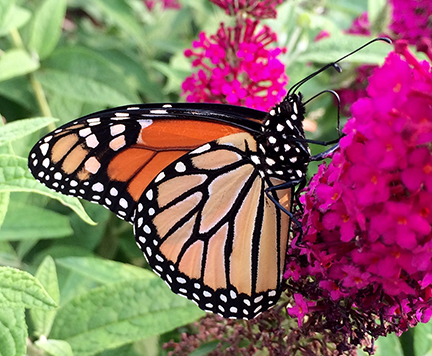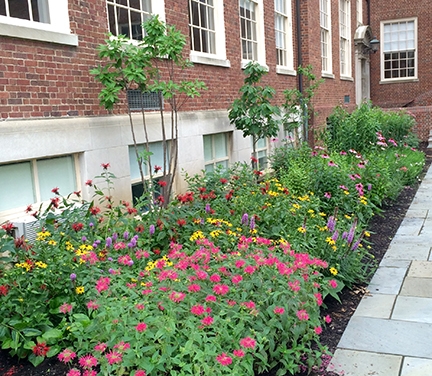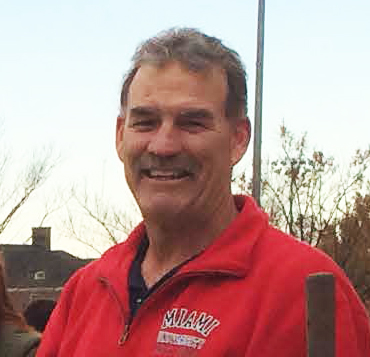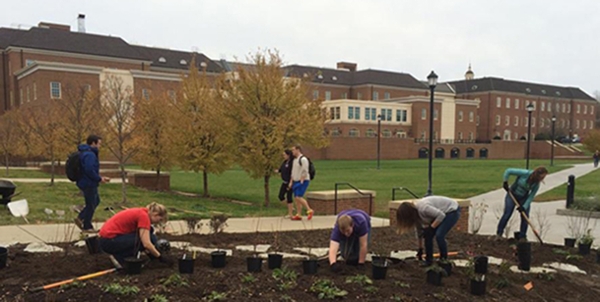

Campus gardens for the Monarch butterfly
Our Campus Beauty
by Vincent Cirrito, landscape architect, physical facilities

A Monarch butterfly feeds in one of Miami's gardens.
A nondescript mowed grass panel west of Pearson Hall was recently transformed into a pollinator friendly garden by Dan Garber, Miami’s horticulturist.
The area was marked by a dirt “cow path” leading to the north garage parking lot entrance.
The new garden was a natural extension of the existing landscaping islands already located on the green roof of the north parking garage. This creates a busy corridor for butterflies and other pollinators north of the engineering building.

Upham Hall terrace garden
As the population of the native Monarch butterfly continues its rapid decline due to human development, herbicide use and roadside mowing, it’s important to provide locations for habitat.
Miami is taking part in this movement by setting aside certain locations across campus where plantings are designed to provide food sources for pollinators including the Monarch.
The key to creating a garden for the Monarch, says Garber, is to include plants that meet the needs for all four life stages and include the host plant Milkweed (Asclepias spp.) along with nectar plants such as Butterfly Weed (Asclepias tuberosa), Liatris (Liatris spicata), Purple Coneflower (Echinacea), Black Eyed Susan (Rudbeckia hirta) and Bee Balm (Monarda).

Dan Garber, horticulturalist
Garber usually includes other host plants such as the Paw Paw tree (Asimina triloba), Spice Bush (Lindera benzoin) or Sweetbay Magnolia (Magnolia virginiana) in his gardens for other butterflies.
What makes this garden special according to Garber is that it took shape with the help of student organizations including the Entomology Club and Advocates for Animals Club. Students of these organizations provided funding as well as got down and dirty to help plant the garden.
This garden, as well as the butterfly garden located inside the bird blind near the Dewitt Cabin in Miami’s Natural Areas, are certified weigh stations by the Monarch Watch Organization. These places provide Monarch habitat for regeneration and migration.
More information on what can be done in your own backyard to promote habitat for Monarchs can be found here: http://www.monarchwatch.org/index.html.
View other gardens by Garber in these locations across campus:
- Upham Hall Terrace Bluestone Garden.
- Triangle garden near Boyd Hall.
- Rec Sports butterfly garden (south side near Oak Street).
- High Street butterfly garden (bus stop north of Laws Hall).
- Other perennial gardens located throughout campus.

Students from the Advocates for Animals and Entomology clubs helped to create the butterfly garden near the north parking garage last fall.
Our Campus Beauty appears each month in Miami Matters.
